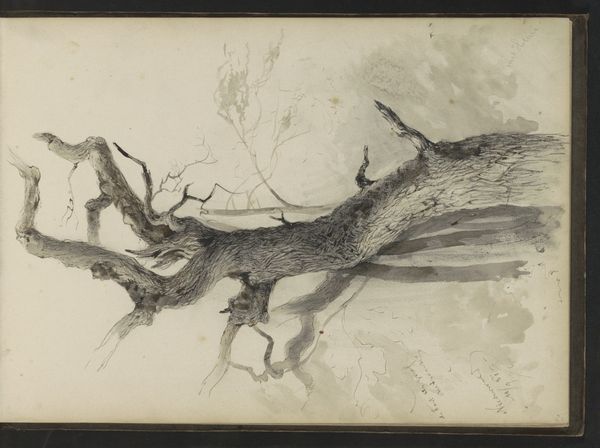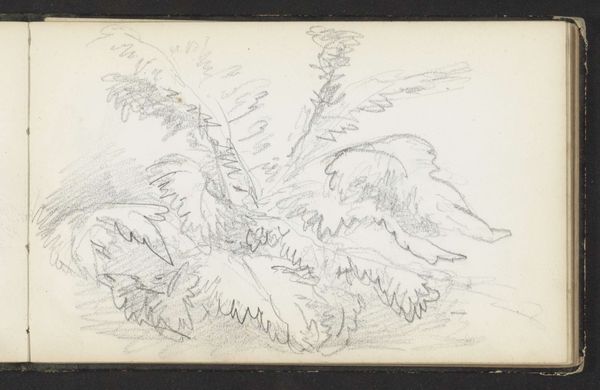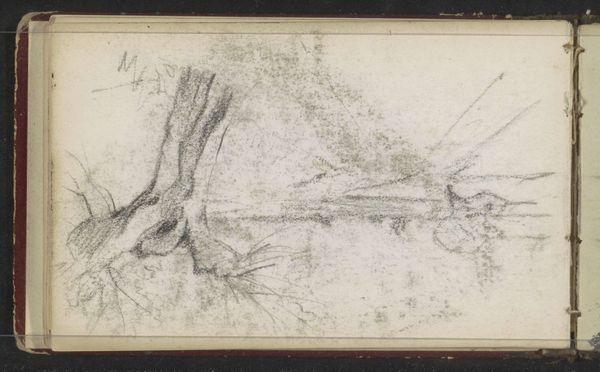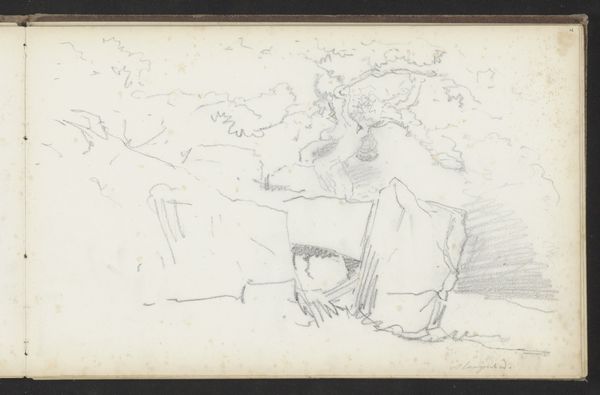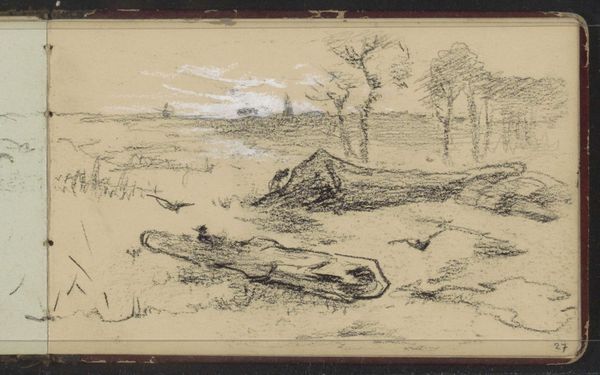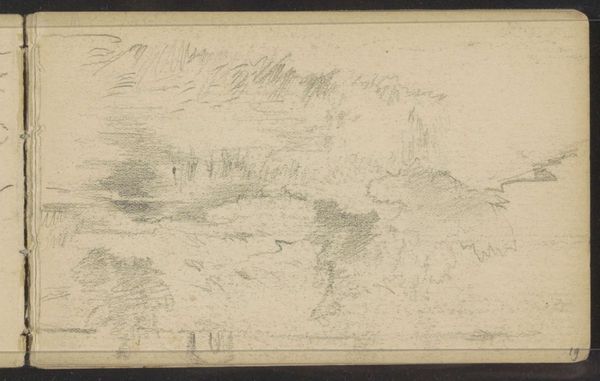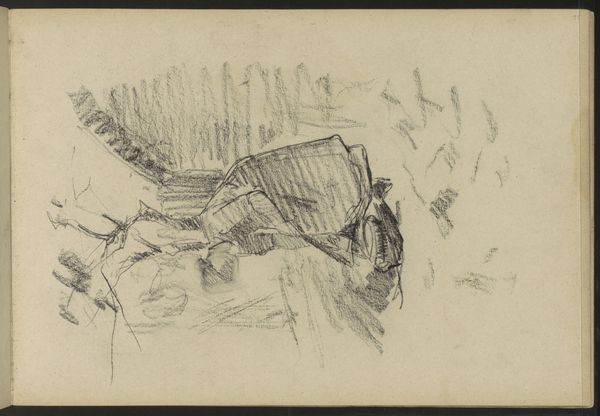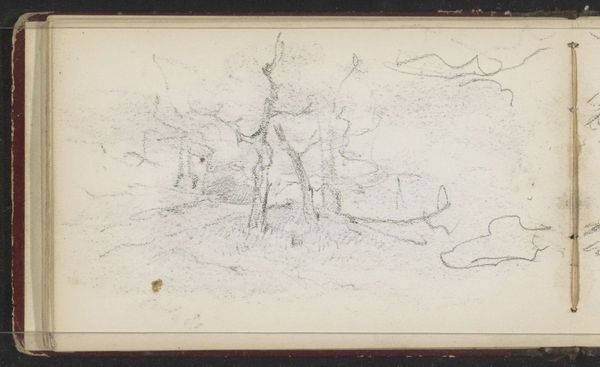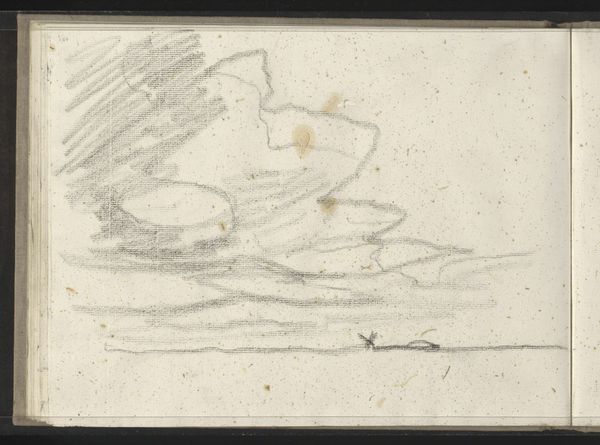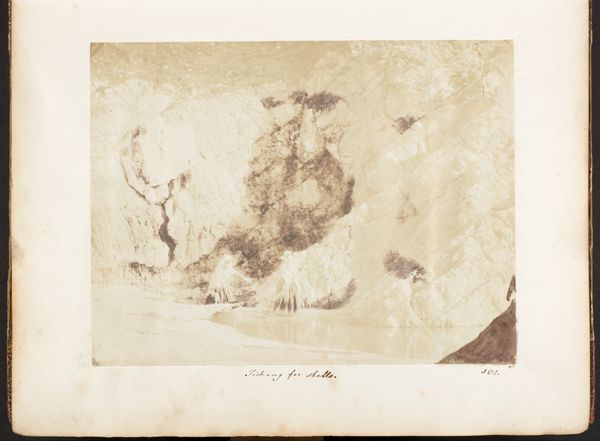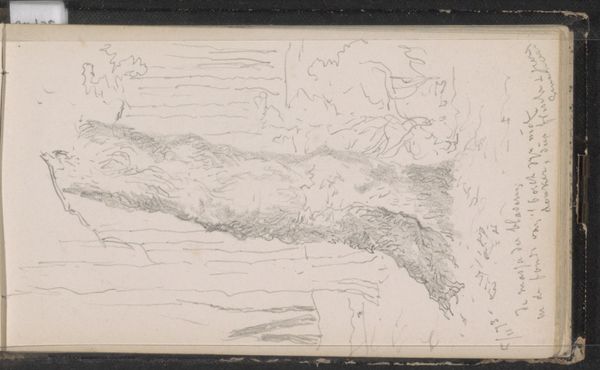
drawing, ink, pencil
#
drawing
#
ink painting
#
landscape
#
ink
#
pencil
#
watercolor
Copyright: Rijks Museum: Open Domain
Curator: Immediately I see a sense of melancholic serenity. The light is muted, and the washes create a very subdued tonal range. Editor: We are looking at a pencil and ink drawing from 1873 by Johannes Tavenraat. It is titled, “Liggende boomstam aan de waterkant in het Haagse Bos,” which translates to "Lying tree trunk on the waterfront in the Hague Forest." The work resides here at the Rijksmuseum. Viewing this work today brings to mind the extensive history of land usage that is tied to the location in The Hague, so deeply intertwined with systems of power and the evolution of public and private spaces. Curator: Yes, I understand that, and those considerations of space absolutely play a role here. But on the level of pure visual experience, it is mostly the balance and the contrasts within Tavenraat's composition that captures my eye. Consider how the horizontal form of the trunk cuts across the verticality of the distant trees, creating a dynamism between foreground and background, flatness and depth. And look at the light and shade, almost an exercise in grisaille. Editor: Exactly. One must always keep in mind that these were once royal hunting grounds transformed into a space where class divisions played out quite prominently, even in leisure. The artist likely saw this felled tree not merely as part of a peaceful landscape but as symbolic of something quite different within that broader political landscape. Curator: True, but it also shows an attention to detail through varied tonal and structural components. Look at the almost haphazard marks used to describe the vegetation at the center versus the relative smooth areas behind, and below in the water. There is so much variety in the work's internal pictorial language. Editor: This scene exists in a specific place and time. I read that period in Dutch history as intensely engaged in establishing national identity through both built and natural landscapes. Artists didn’t just stumble upon picturesque locales. They, and this work, served social and sometimes politically-driven purposes, consciously or not. Curator: Yes, of course context always matters, but without a focused perspective on the formal structure of a piece like this, that political landscape you’re speaking of remains just beyond reach. The success is the harmony of its various elements. Editor: And harmony within any context must always be interrogated to reveal those relationships and reveal how deeply human the process and result are. Curator: Precisely. Now seeing and thinking in the combination is much closer to seeing what may have driven Tavenraat’s work and choices.
Comments
No comments
Be the first to comment and join the conversation on the ultimate creative platform.

